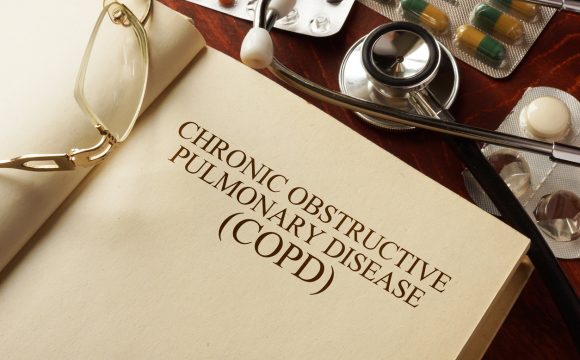Women with asthma need to be alert to a new risk. Women who have asthma might be in danger of COPD in their later years. FLASS wants to alert women who deal with asthma to this newly researched health risk.
Research at the University of Toronto

Women with Asthma Must be Alerted to COPD Dangers
In Canada, researchers have examined risk factors for developing asthma and COPD overlap syndrome. This is especially true in women and is known as ACOS. “Those who develop ACOS experience increased exacerbations, hospitalizations and have a lower quality of life, compared to those who have asthma or COPD alone.”
Let’s backtrack to get some facts for the backstory on this research.
What is ACOS?
The letters in ACOS stand for asthma and COPD overlap syndrome. Women need to be especially alert about developing this overlap between two respiratory diseases. Let’s take a look:
1. If you have only asthma, you know that symptoms fluctuate and change over time. You can even be free of your asthma for long stretches of time. “Asthma often involves symptom triggers like exercise, exposure to allergens, or a respiratory illness. It can start in adulthood. But asthma usually begins in childhood.”
2. If you are among the women who have only COPD, your symptoms probably started after age 40. With COPD, your symptoms vary, but they are chronic. Sadly, they are also progressive, “even with treatment.” They added, “Most people with COPD also have a history of smoking or smoke exposure.”
ACOS Creates an Insidious Blend of Respiratory Symptoms from Asthma and COPD

The International Research Community Has Great Concern for the Lungs of Women
Now, ACOS is the name given to the syndrome that “shares characteristics of both COPD and asthma. People with ACOS experience some type of ongoing airway obstruction.”
a. Like asthmatics, “They also experience wheezing or breathing difficulties, that often respond to bronchodilators.” Bronchodilators are medications that open the airway.
b. Healthline reports that People with ACOS also seem to be younger and experience more shortness of breath than people with COPD alone.
c. Keep this In Mind. Researchers are still studying this syndrome. And it is difficult to focus on a single, clear-cut definition of this overlapping condition.
Researchers have declared that “Women with asthma are at a high risk of developing COPD, or asthma and COPD overlap syndrome (ACOS) as they age… ”This means such women will have:
- A high mortality rate,
- A low quality of life,
- And High Healthcare costs.
Challenges for the Researchers
The researchers faced challenges in understanding the development of ACOS and in identifying the risk factors involved in spite of the fact that the development of ACOS is still shrouded in mystery.
Their Research Objective: To quantify the risk of developing COPD in Ontario women with asthma and identify factors that are associated with increased risk.
“Previous studies have found an alarming rise in ACOS in women in recent years and that the mortality rate from ACOS was higher in women than men.” This was stated by Dr. To, a professor in the Graduate School of Public Health at the University of Toronto in Canada.
He added a sense of urgency, “We urgently need to identify and quantify risk factors associated with ACOS in women to improve their health and save lives.” And he listed compelling reasons for studying this phenomenon.

Smoking Enhances the Risk of Developing ACOS, But Non-Smokers Also Tread the Danger
- More than 4 in 10 women with asthma may go on to develop a chronic obstructive pulmonary disease (COPD). This is according to a study conducted in Ontario, Canada, and published online in the Annals of the American Thoracic Society.
- In the recently published article “Asthma and COPD Overlap in Women: Incidence and Risk Factors,” Teresa To, Ph.D., and coauthors report that of the 4,051 women with asthma included in their study, 1,701, or 42 percent, developed COPD.
- To discover this amazing fact, they went into detailed medical histories. “On average, the women were followed for about 14 years after being diagnosed with asthma.”
What are the Risk Factors For Women and Others?
The authors of the report state that “that individual risk factors played a more significant role in the development of ACOS than exposure to fine particulate matter.” This relates to an “air pollutant that because of its microscopic size penetrates deep into the lungs.”
They found that “Women who had a more than five-pack-year smoking history, meaning they had smoked more than the equivalent of a pack of cigarettes a day for five years, were much more likely to develop ACOS than those who smoked fewer cigarettes or never smoked.” However, the mysterious syndrome defied even that statistic.
Researchers discovered “ACOS did not affect only those who smoke. 38 percent of the women who developed ACOS in the study had never smoked.” The researchers then uncovered more risk factors in addition to smoking.
They also found these risks:
- Obesity,
- Rural residence,
- Lower education levels
- And Unemployment.
All of these points became significant risk factors for ACOS. The researchers then speculated that these factors indicated low economic status. Perhaps such women had suboptimal access to care. Perhaps such women also under-treated their asthma and did not comply with their medications. Therefore, they endured more frequent asthma attacks.

Medical Science has a Responsibility to Educate Women of ACOS Risk
The research scientists then concluded that these attacks “lead to airway remodeling that increases the chances of developing ACOS.” Limits of the study included the lack of information about the women’s exposure to second-hand smoke and air pollution.
However, the authors of this study were edified by the fact “that most of the risk factors identified in their study were modifiable.” We can warn women about ACOS. They can avoid some of the risks like smoking.
Two Final Major Conclusions about ACOS and Women’s Risks
Dr. To is also the senior scientist of the Child Health Evaluative Sciences at The Hospital for Sick Children. The Doctor stated, “The adverse impact of smoking and obesity on health may be even worse in those who are already living with asthma or COPD…”
They also concluded that “Identifying modifiable risk factors in the progression from asthma to COPD is an essential first step in developing prevention strategies that lead to a healthy, active lifestyle.”
For more information, you can look at the Journal Reference “Asthma and COPD Overlap in Women: Incidence and Risk Factors.” In the Annals of the American Thoracic Society,
Just a Suggestion for Women from FLASS

Women Must Minimize Their Risk of ACOS With Healthy Choices
So if you are among women who are aging and have asthma, take care. Perhaps you should be on the look-out for other respiratory symptoms.
You might, for example, feel a shortness of breath without triggers or other conditions that usually cause you to have an asthma attack.
And the shortness of breath lasts for long periods. That’s when you make an appointment to see your doctor because only he or she can tell if your asthma condition has crossed over into a COPD condition. Only he or she can diagnose and treat ACOS, the hybrid condition of COPD and asthma. Again we remind you that no amount of research online substitutes for a doctor’s appointment.

